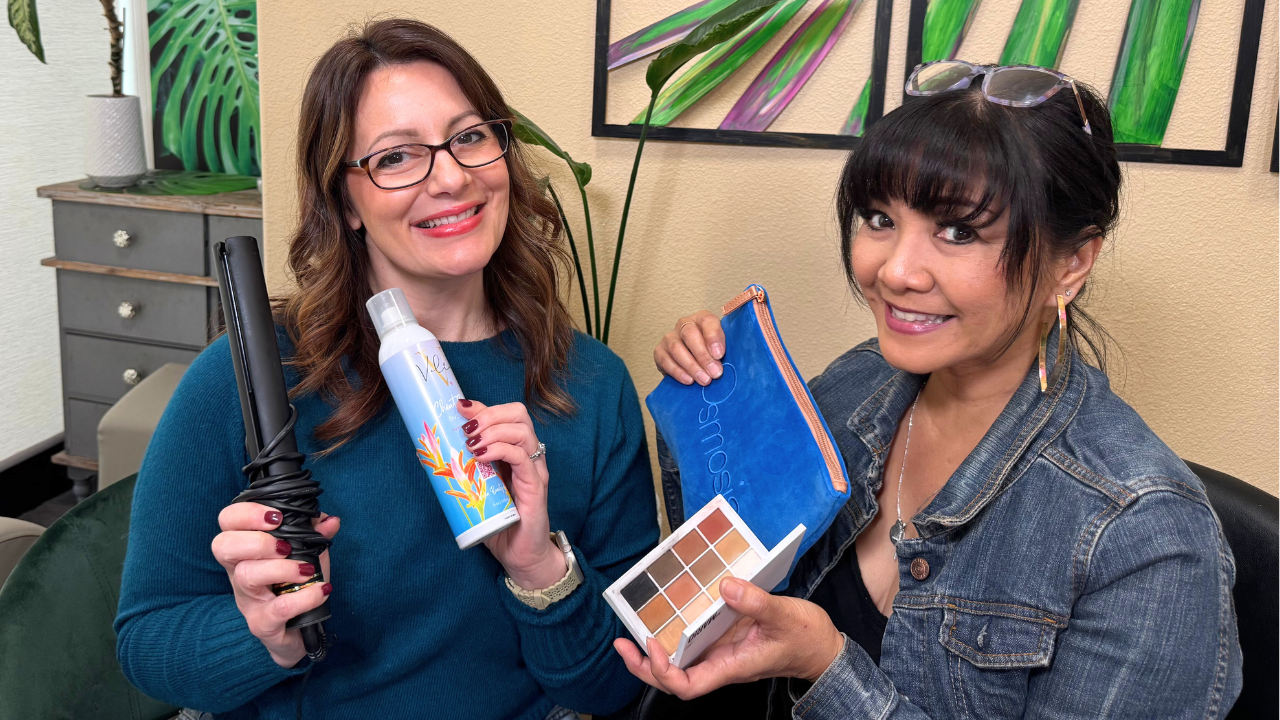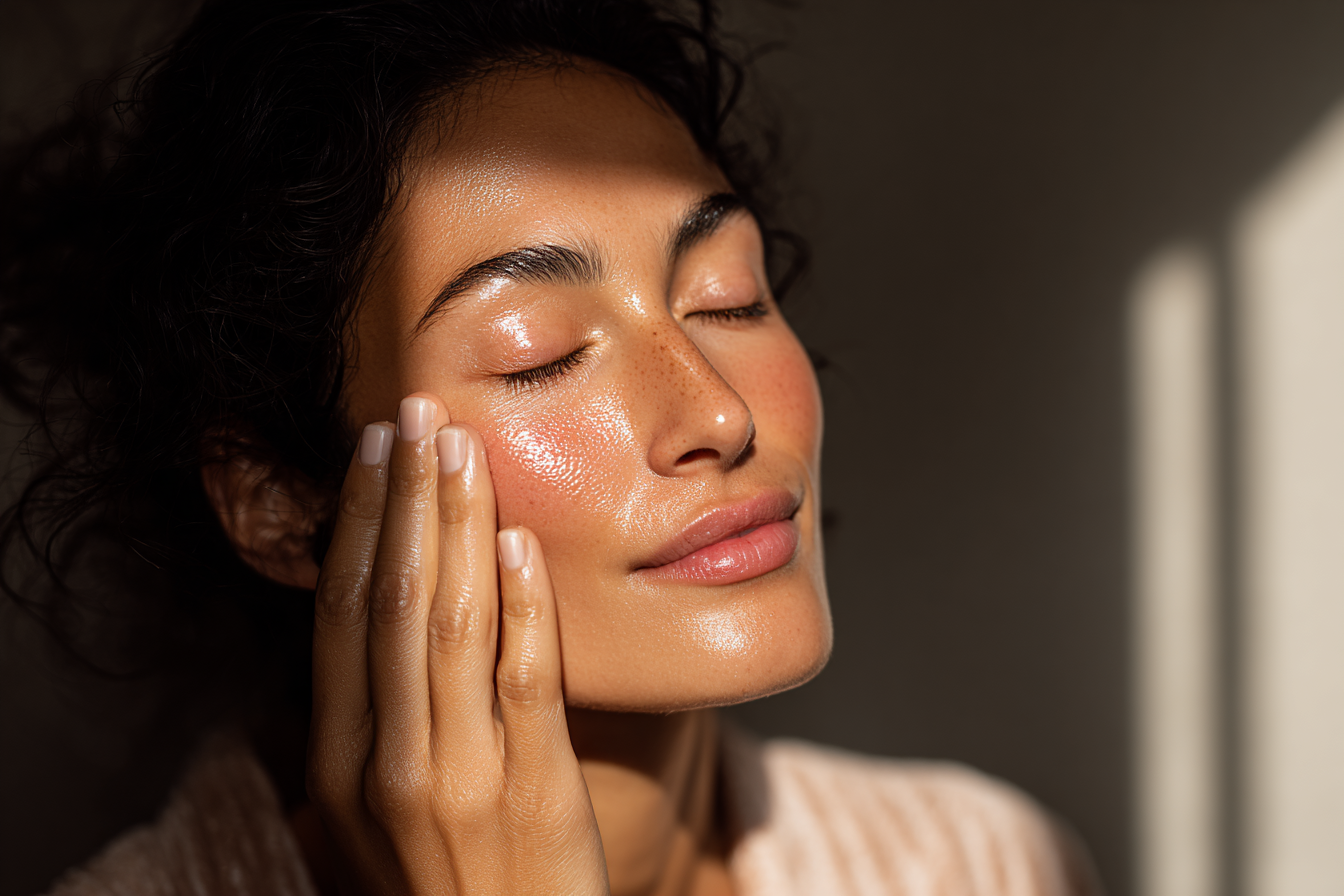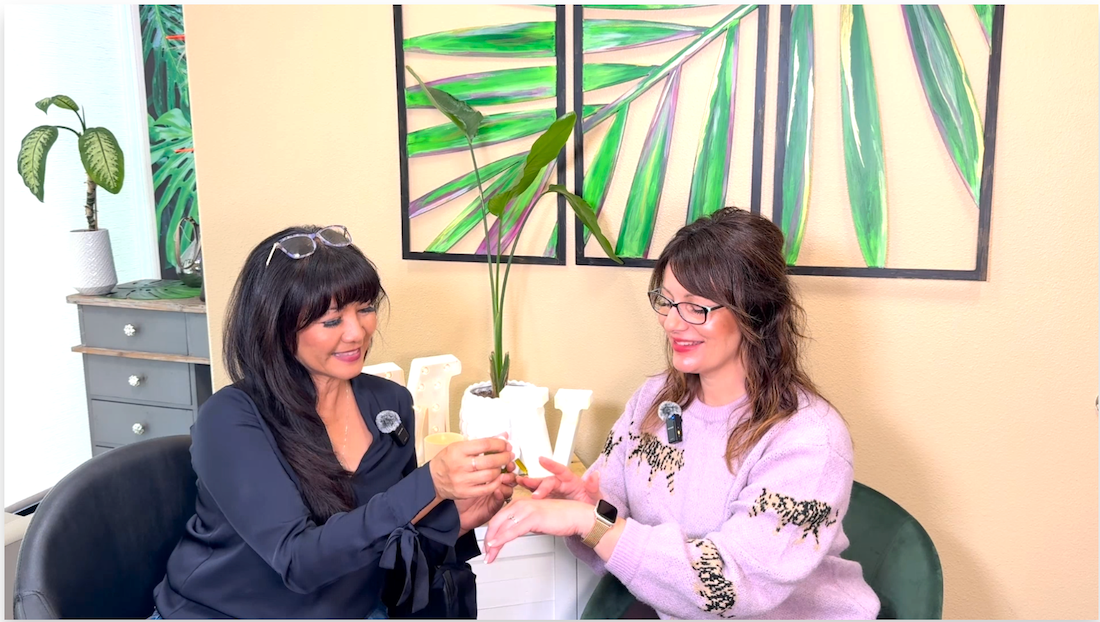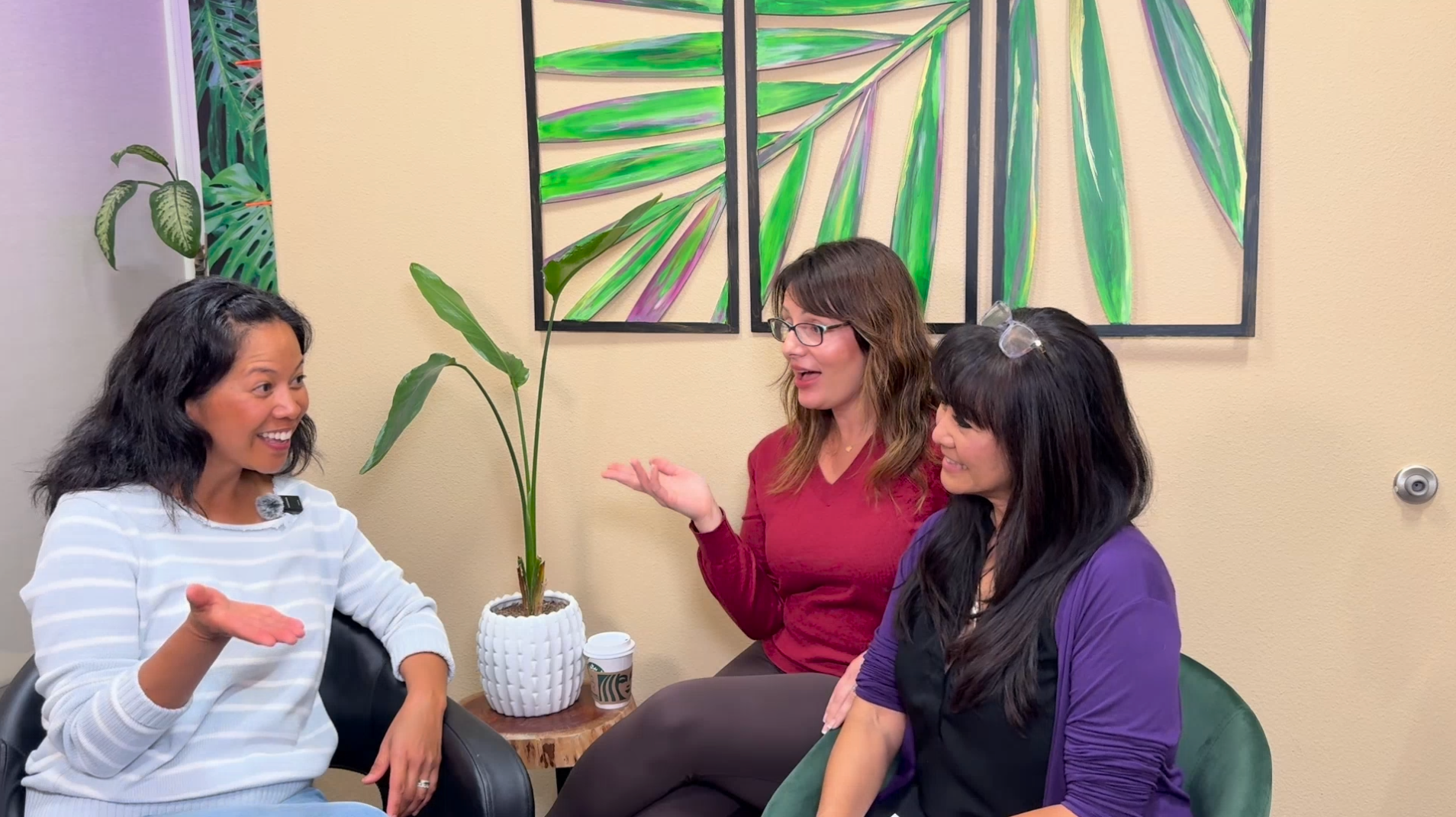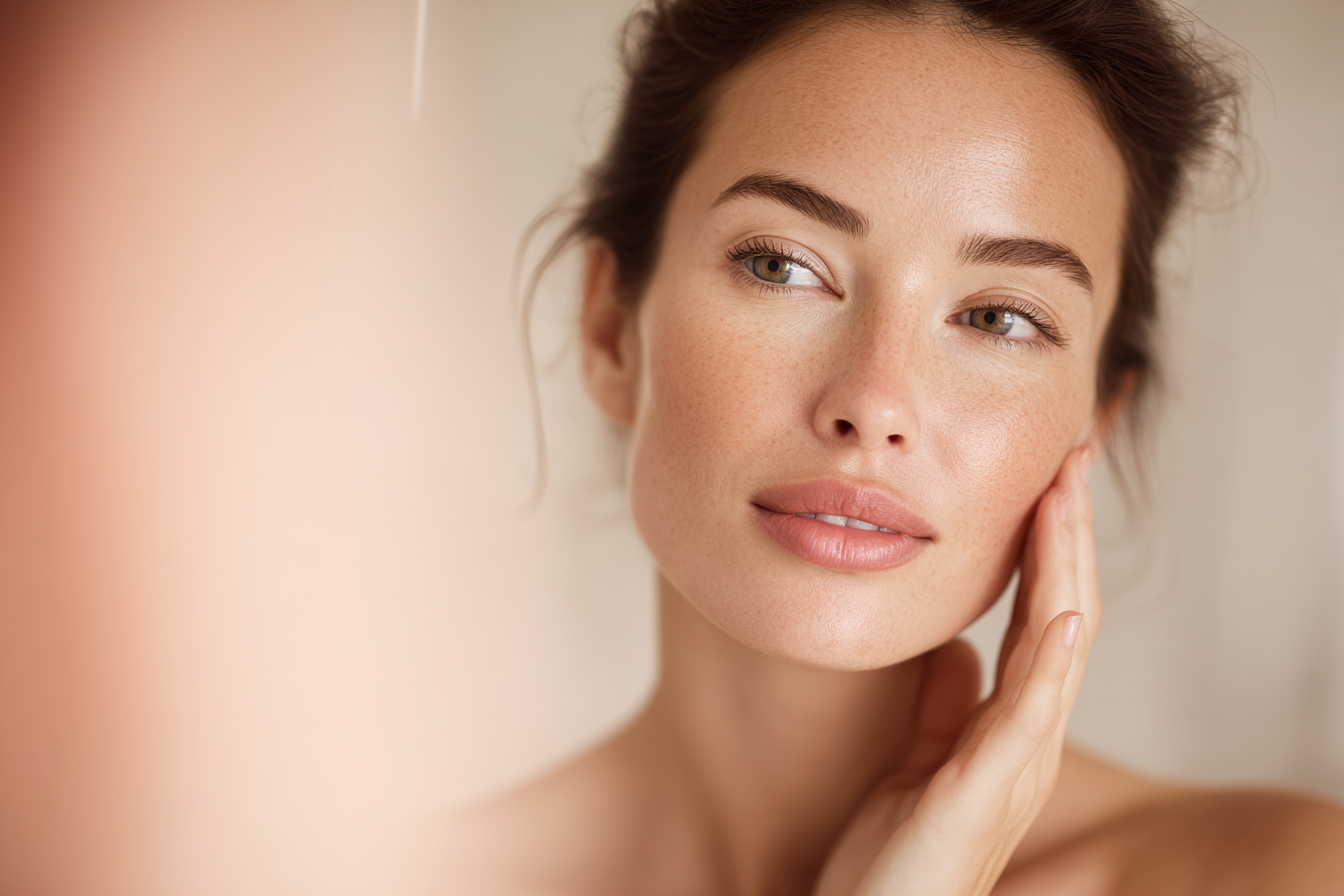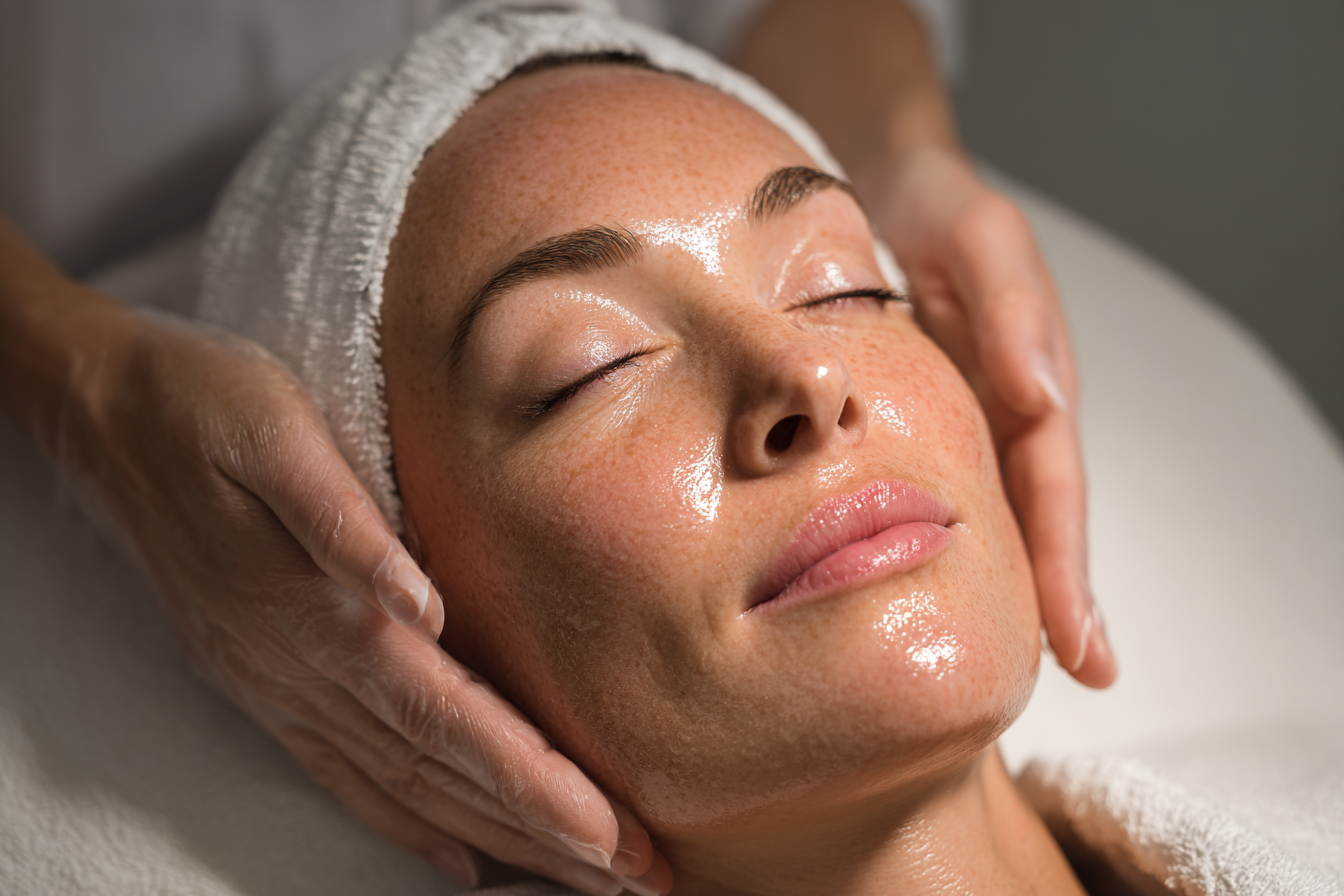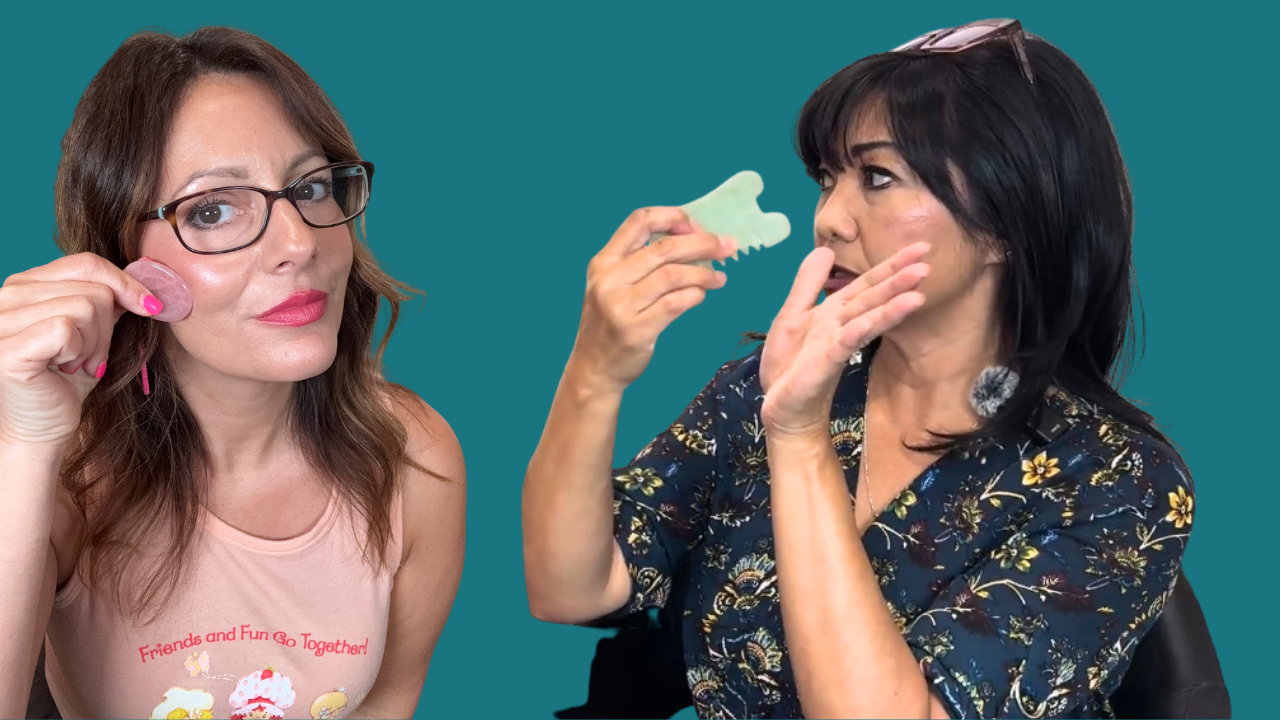Facials Decoded, Hair Saved: Microderm vs. HydroDerm vs. Nanofusion, Round-Brush Fixes + Heat-Protect Tips (Listener Q&A)
Facials Decoded, Hair Saved: Microderm vs. HydroDerm vs. Nanofusion, Round-Brush Fixes + Heat-Protect Tips (Listener Q&A)
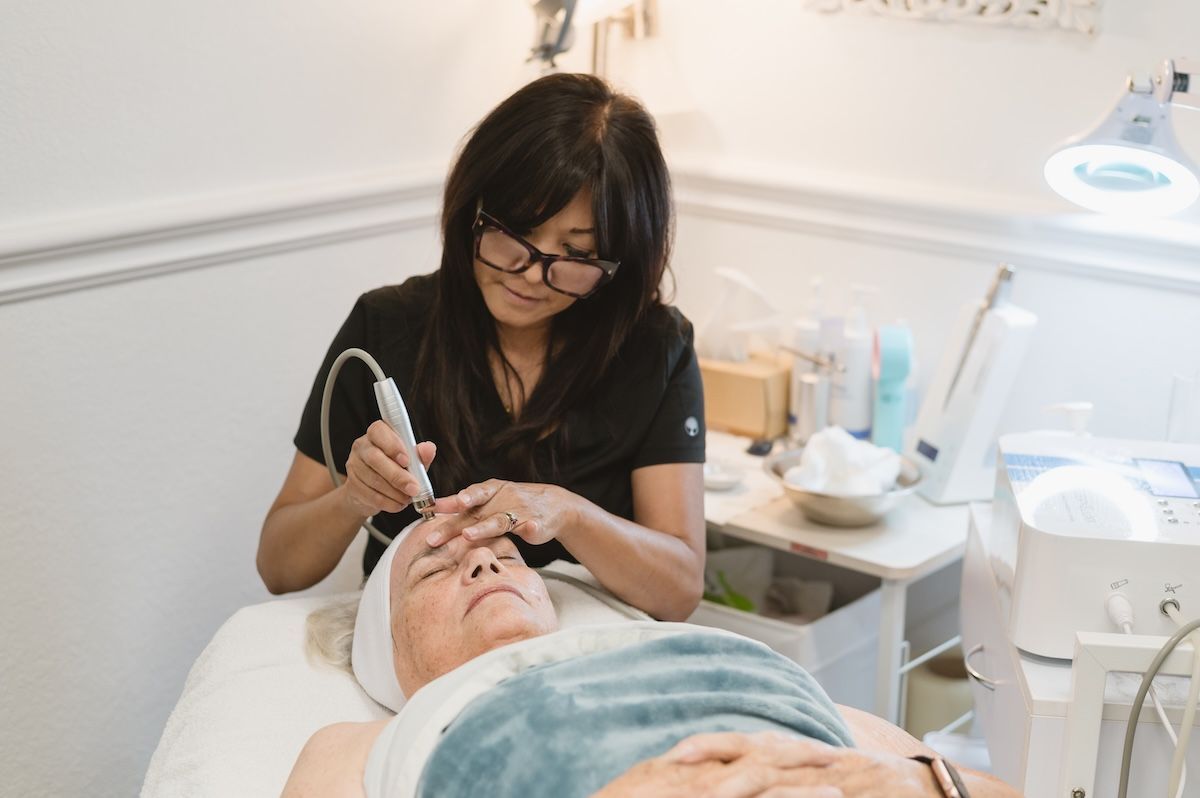
If you love a little beauty nerd-out with your latte, you’re in the right place. I’m Velia (hairstylist), here with my bestie and co-host Monina (esthetician). Today we’re answering
your questions—but with a twist. We quizzed each other first to see what we really know off the cuff. Spoiler: we know a lot… and we still learn new things every episode.
Microdermabrasion vs. HydroDermabrasion vs. Nanofusion (What’s the difference?)
Let’s break it down simply:
- Microdermabrasion =
Exfoliation on dry skin using crystals or a diamond tip. It smooths texture and helps brighten dullness. It’s a machine service that requires training/certification.
- HydroDermabrasion =
Exfoliation + hydration using serums and gentle suction. Think: cleansing the pores while infusing targeted ingredients and whisking away gunk (the satisfying part everyone loves).
- Nanofusion = Micro-channeling to push actives deeper. We use a single-use tip to create tiny channels so high-performance ingredients reach the fibroblasts (where collagen and enzymatic activity party). Results keep improving for 3–4 days—hello, “glass skin.” It’s also how we infuse exosomes, and there’s a new Glass Skin Facial coming that we’ll share more about soon.
If you live in the Bay Area or are traveling here, come see me.
Round Brush Tangles? Here’s How to Stop the Snag
If your hair keeps getting stuck in a round brush while blow-drying, try this:
- Pick the right size. Your section should never be wider than the brush barrel and you should avoid wrapping more than ~2.5 turns.
- Prep matters. Start detangled with a leave-in and a detangling brush.
- Section cleanly. Crisp part lines = cleaner pass-through and smoother results.
- Dry each section fully before you invite new damp hair into the party. Patience = shine.
Beauty Sleep Is Real: The 10 PM–2 AM Repair Window
Your skin follows a circadian rhythm. Around 9 PM you begin to lose hydration (transepidermal water loss increases), and
10 PM–2 AM is peak repair mode. That’s your cue to:
- Cleanse and apply night actives (think retinoids and peptides) before that window.
- Aim to actually be in bed during that time so your skin can do its best rebuilding work.
Best Leave-In for Fine Hair (Without the Weight)
Fine hair needs slip and protection—without the heavy feel. A weightless leave-in (hi, Act Natural) is perfect post-shower on damp hair, focusing mid-lengths to ends. Pro tip: leave-ins go on damp, not dry—so they can distribute evenly and protect during the blow-dry.
Post-Wax Aftercare: What to Avoid for 24 Hours
Freshly waxed skin is exfoliated skin. To prevent irritation, redness, and pigmentation:
- Skip actives (retinoids, AHAs like glycolic, BHAs like salicylic).
- Avoid “zingy” oils (menthol, peppermint, eucalyptus).
- No heavy occlusives (mineral oil, petroleum jelly, thick coconut oil) that trap heat/bacteria.
Your esthetician should set you up with soothing, appropriate post-care—ask for an aftercare kit if you’re prone to redness or ingrowns.
If you want to come see me, I provide the post-care products.
Heat Damage 101: Cream vs. Spray Protectants
Yes, you need a heat protectant—always.
- Cream/leave-in heat protectant → for wet hair before blow-drying.
- Thermal spray → for dry hair before hot tools (curling irons/flat irons). Light mist only—if you hear a sizzle, it’s too much.
Your Turn
Loved this format? Send us more questions! If this was helpful, share it with a friend who’s battling round-brush chaos or curious about “glass skin.” We’re here every week—learning, testing, and cheering on your beauty routine.

